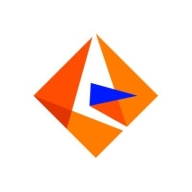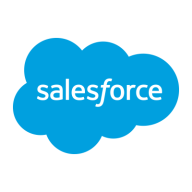

Informatica PowerCenter and Tableau are complementary products in the data management and business intelligence category. Informatica PowerCenter has an upper hand in support and pricing, but Tableau is preferred for its advanced visualization capabilities.
Features: Informatica PowerCenter is recognized for its robust ETL capabilities, data transformation, and integration across diverse platforms. It provides comprehensive data quality management, capable of handling complex data preparation with various transformations. Tableau stands out in powerful data visualization, enabling interactive visual dashboards for rapid insights. It simplifies intuitive data presentation, catering to self-service BI needs.
Room for Improvement: Informatica PowerCenter could enhance its user interface for greater intuitiveness and simplify its setup process to reduce deployment complexity. An improvement in cloud integration and real-time analytics features would increase its appeal. Tableau can improve by strengthening data integration capabilities to better handle large-scale data sets. Providing more detailed tutorials for complex visualizations and increasing customization options for advanced users would enhance user experience.
Ease of Deployment and Customer Service: Tableau provides straightforward deployment with options for cloud and on-premise solutions and focuses on self-service BI tools requiring minimal IT involvement. Its excellent customer support aids quick implementation. Informatica PowerCenter has a more complex setup process, but it offers extensive customer service crucial for large-scale data integration tasks, although deployment may require more structured planning.
Pricing and ROI: Informatica PowerCenter has higher setup costs, justified by its extensive functionalities yielding impressive ROI through enhanced data quality and operational efficiency. Tableau offers competitive pricing, focusing on swift ROI realization with increased data accessibility and faster insights delivery, appealing to businesses prioritizing visualization and analysis over expansive data management.
This saves a significant amount of time, particularly for reports that would have needed around fifty people.
The ROI of using Tableau extends to its seamless integration across various platforms, as it's from Salesforce and thus not limited to any specific cloud provider.
Tableau is saving me time, money, and resources, which I would rate as ten.
I like the technical support provided by Informatica.
They provide quick email and phone responses and have Thai-speaking personnel.
There should be consistent standards for all users.
The technical support for Tableau is quite good.
For scalability, I would rate Informatica PowerCenter between eight to nine.
Tableau is easy to use across various dimensions, whether on-premises or on the cloud.
The solution is fully scalable and performs well even with large datasets, provided there is proper supporting hardware.
Tableau is easy to scale.
Informatica PowerCenter is stable and can scale well.
The application hangs after continuous use due to the buildup of cache.
I rate the stability a five or six because Tableau updates very often with new versions or patches.
With Informatica PowerCenter, I am looking for an AI interface that looks at the underlying data model of the databases and the metadata of the tables, allowing the developer to provide instructions on what data sources to connect to and how to apply or create Transformations.
Utilizing more stored procedures from Oracle databases in an easy way would significantly boost performance.
We cannot send the entire Excel file reports via email within Tableau.
The product owner should enhance its benefits or clarify its role.
It sometimes requires extensive investigation to determine why the data does not appear correctly.
I find that the pricing and licensing for Informatica PowerCenter align with its quality.
The price of Informatica PowerCenter is high, especially for small and medium-sized businesses.
Power BI as a much cheaper alternative.
A license for 150 users costs around $17,000 USD per year.
Looker is known to be quite expensive.
The system supports real-time integration, which is essential for many of my tasks.
The functions in Informatica PowerCenter that I have found most valuable are the way it manages the volume of data, the push down optimization, and the performance aspects of it, mostly related to parallelism techniques.
A significant feature for me is the real-time connection to data sources because it effectively manages large data sets.
Tableau serves as a stable dashboarding tool for higher management, aiding in quick decision-making.
Building hyper extracts and visualization capabilities make Tableau a robust tool for data analysis.


Informatica PowerCenter is a data integration and data visualization tool. The solution works as an enterprise data integration platform that helps organizations access, transform, and integrate data from various systems. The product is designed to support companies in the full cycle of a project, from its initial rollout to critical deployments. Informatica PowerCenter allows developers and analysts to collaborate while accelerating the work process to deploy projects within days instead of months.
The Advanced edition of the product provides an additional real-time engine which allows companies to have always-on enterprise data integration. This ensures seamless collaboration and increment of data lineage visibility and impacts analysis.
The Premium edition of the solution offers an early warning system that detects unexpected behaviors or incorrect utilization of resources in the workflows and alerts companies in the case that these occur. This version of the product also offers automatic data validation, which ensures data accuracy and reduces testing time and expenditure of resources for by up to 90%.
Informatica PowerCenter Features
The product provides users with various features which allow them to execute data integration initiatives such as analytics, data warehousing, data governance, consolidation, and application migration. The features of the solution include:
Informatica PowerCenter Benefits
The benefits of using Informatica PowerCenter include:
Reviews from Real Users
Yahya T., a developer and architect at L'Oreal, says the product is stable, provides good support, and integrating it with other systems is very fast.
Mohamed E., a senior manager for Data management and data governance at a tech company, says PowerCenter is stable, mature, and offers flexibility in building the pipeline and has a drag-and-drop mode because it's GUI-based; technical support is brilliant.
Tableau is a tool for data visualization and business intelligence that allows businesses to report insights through easy-to-use, customizable visualizations and dashboards. Tableau makes it exceedingly simple for its customers to organize, manage, visualize, and comprehend data. It enables users to dig deep into the data so that they can see patterns and gain meaningful insights.
Make data-driven decisions with confidence thanks to Tableau’s assistance in providing faster answers to queries, solving harder problems more easily, and offering new insights more frequently. Tableau integrates directly to hundreds of data sources, both in the cloud and on premises, making it simpler to begin research. People of various skill levels can quickly find actionable information using Tableau’s natural language queries, interactive dashboards, and drag-and-drop capabilities. By quickly creating strong calculations, adding trend lines to examine statistical summaries, or clustering data to identify relationships, users can ask more in-depth inquiries.
Tableau has many valuable key features:
Tableau stands out among its competitors for a number of reasons. Some of these include its fast data access, easy creation of visualizations, and its stability. PeerSpot users take note of the advantages of these features in their reviews:
Romil S., Deputy General Manager of IT at Nayara Energy, notes, "Its visualizations are good, and its features make the development process a little less time-consuming. It has an in-memory extract feature that allows us to extract data and keep it on the server, and then our users can use it quickly.
Ariful M., Consulting Practice Partner of Data, Analytics & AI at FH, writes, “Tableau is very flexible and easy to learn. It has drag-and-drop function analytics, and its design is very good.”
We monitor all Data Visualization reviews to prevent fraudulent reviews and keep review quality high. We do not post reviews by company employees or direct competitors. We validate each review for authenticity via cross-reference with LinkedIn, and personal follow-up with the reviewer when necessary.